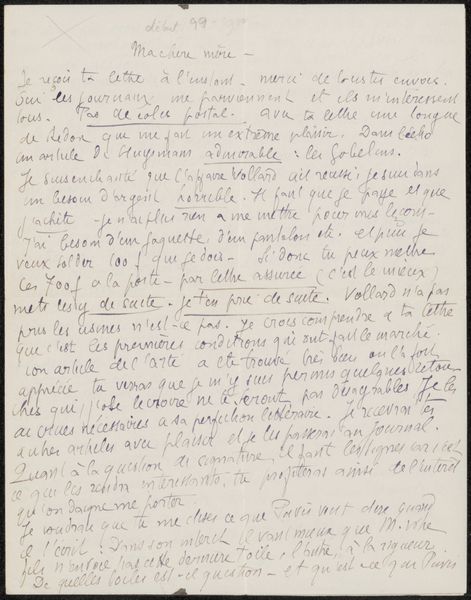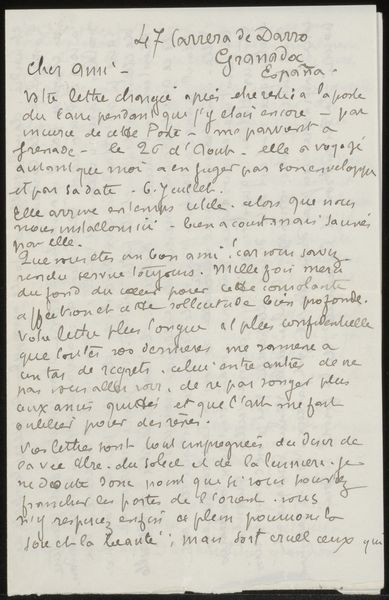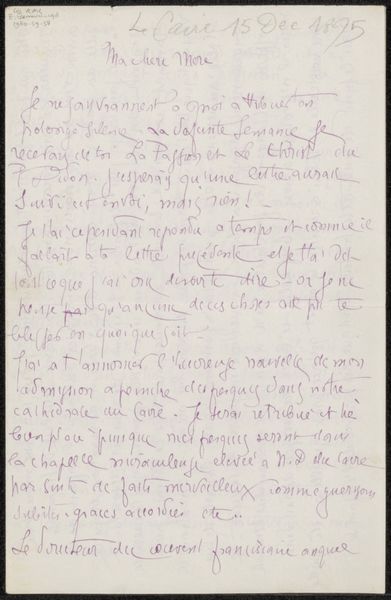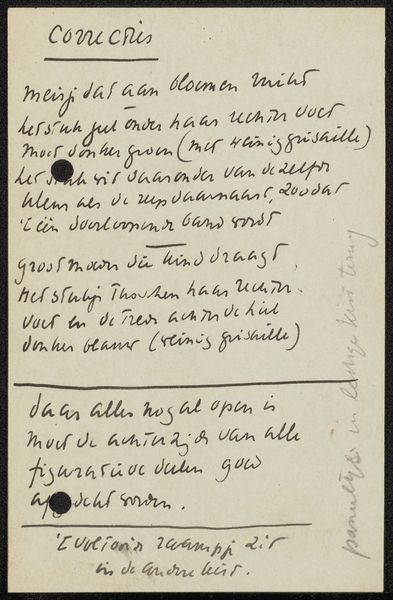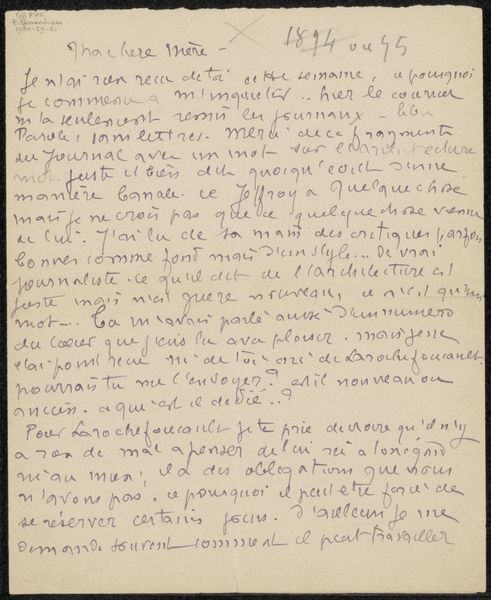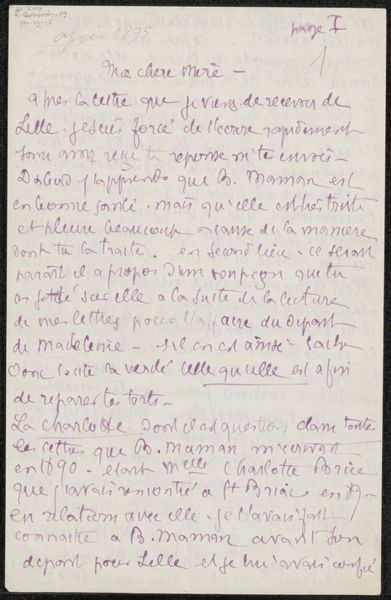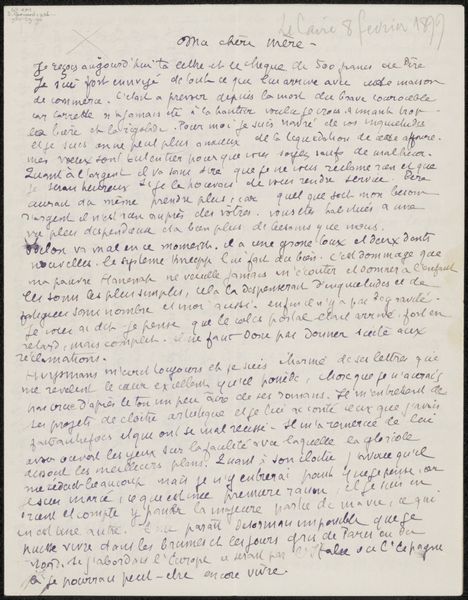
drawing, paper, ink
#
drawing
#
paper
#
ink
#
calligraphic
#
calligraphy
Copyright: Rijks Museum: Open Domain
This letter, made by Emile Bernard in 1895, feels like a sketch in words. The handwriting itself has a kind of rhythm, a pulse that reminds me of how I approach a canvas. The dark ink against the pale paper creates a stark contrast, a visual dance much like the interplay of light and shadow in a painting. Looking closely, you can see how the letters lean and curve, some strokes thick, others thin, like the varied marks I make with my brush. This particular passage, “travail and clay,” gives me a jolt – it is so tangible! It reminds me of Cy Twombly, not just the scribbled forms, but the sense of something deeply felt being communicated with such directness. Like Twombly, Bernard isn't trying to hide the process; he’s laying it bare. The letter is not just a message but a record of a moment, a process of thinking and feeling made visible. And in that, it becomes something more than just a letter, it becomes a work of art.
Comments
No comments
Be the first to comment and join the conversation on the ultimate creative platform.

